France’s new Environmental Cost labeling program, informally known as the Eco-Score, marks one of the most significant policy shifts for fashion and retail in recent years.
Designed to standardize how product-level environmental impact is measured and communicated, it will soon influence not only how brands disclose data, but also how consumers make purchasing decisions.
For sustainability, product, and compliance teams, now is the time to understand what’s coming, what’s required, and how to turn this regulatory change into a strategic opportunity.
What is the French Eco-Score?
The Eco-Score is a new label that communicates the environmental cost of textile products placed on the French market, calculated using a life cycle assessment (LCA) approach. It consolidates a range of impact indicators, including greenhouse gas emissions, water use, and pollution, into a single score, expressed in total environmental cost points and points per 100g of product.
The goal is twofold:
- Empower consumers to make more informed choices, much like nutrition labels on food
- Incentivize brands to design lower-impact products, employ better business practices, and improve their supply chains.
When does France’s Environmental Cost labelling program come into effect?
The Eco-Score rollout is proceeding in two key phases, spanning 2025 and 2026. Here’s how the label is being implemented.
- From 1 October 2025: Brands can voluntarily calculate, declare, and display Eco-Scores using France’s official calculation and disclosure platforms.
- From 1 October 2026: Anyone, including NGOs, competitors, or media, will be able to calculate and publicly share scores for products without the brand’s consent. These third-party scores can be published using generic, worst-case assumptions for many optional parameters, leading to worse product scores.
In other words, while the scheme is technically voluntary, not participating leaves brands open to reputational risk and loss of control over how their products’ impacts are communicated to the public.
Who needs to comply with the French Eco-Score?
For the sake of full transparency, Eco-Score is a voluntary program.
However, any company, French or non-French, that manufactures, imports, or sells covered textile apparel products in the French market falls within the scope of the program, meaning their products placed on the French market are eligible for score calculation and publication. There’s no size threshold: from emerging labels to global retailers, all companies are affected if their products are sold in France.
Even though the Eco-Score isn’t legally mandatory by default, there is one circumstance where calculation and display are required: when the brand displays another environmental impact score on their product (e.g., an aggregated impact score). In these cases, the brand must remove its other score(s) or add the Eco-Score to the display.
Regardless, because of the risk of third-party calculation, brands are strongly incentivized to take control of their own scores. Where a brand calculates its own Eco-Score, only the brand’s score can be displayed, enabling brands to “preempt” third parties from challenging the score with their own calculations.
Which products are included in the French Eco-Score?
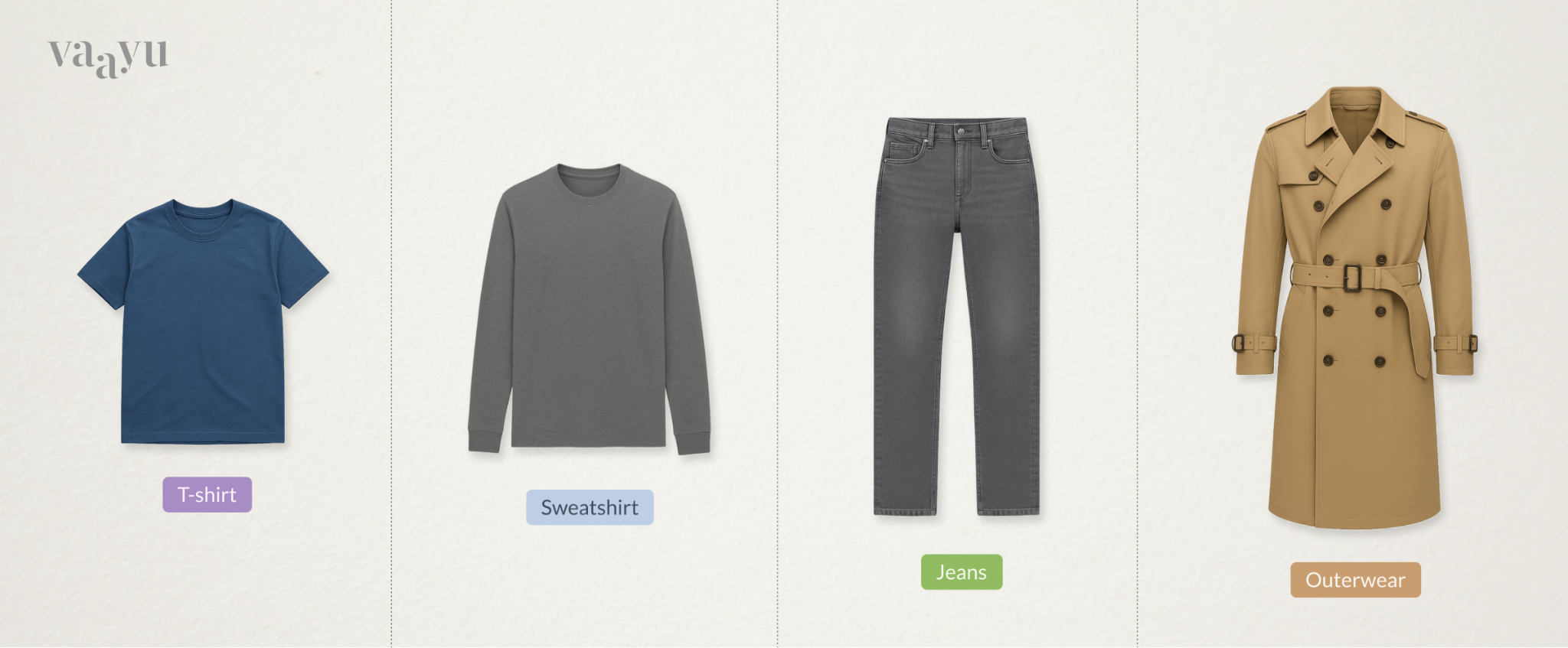
The program currently applies to textile apparel products, including t-shirts, jeans, skirts, dresses, and outerwear, among other categories.
There are a significant number of exclusions. Excluded from the first phase are:
- Footwear
- Accessories such as bags, scarves, hats, and gloves
- Household linens
- Bras
- Leather products
- Clothing with electronic components
- Products with more than 20% non-textile materials by weight
- Products not available on the French market
- Second-hand items.
Is the Eco-Score mandatory?
No. The system is voluntary, with caveats. Ultimately, if your company does not display any other environmental impact metrics, you are not required to publish an Eco-Score.
However, if you already display impact scores and wish to continue doing so in France, you will also be required to include the Eco-Score alongside them.
And from 2026, even if you choose not to declare your scores, a third party can do it for you. A third party will not have access to the same data you have internally at your company; therefore, the score will rely on worst-case assumptions for all optional parameters. This is likely to lead to a ‘worse’ score that does not accurately reflect the performance of your products.
This is particularly true for certain “sustainability” criteria, like your range width, sale price, and availability of repair services, which can vary a score by as much as 45% from what it would be based on environmental attributes alone.
This final caveat makes proactive disclosure the safest and most strategic option, since by taking the initiative to calculate your own scores, you will likely receive a more accurate score while also owning the narrative of your products’ performance.
How is the Eco-Score calculated?
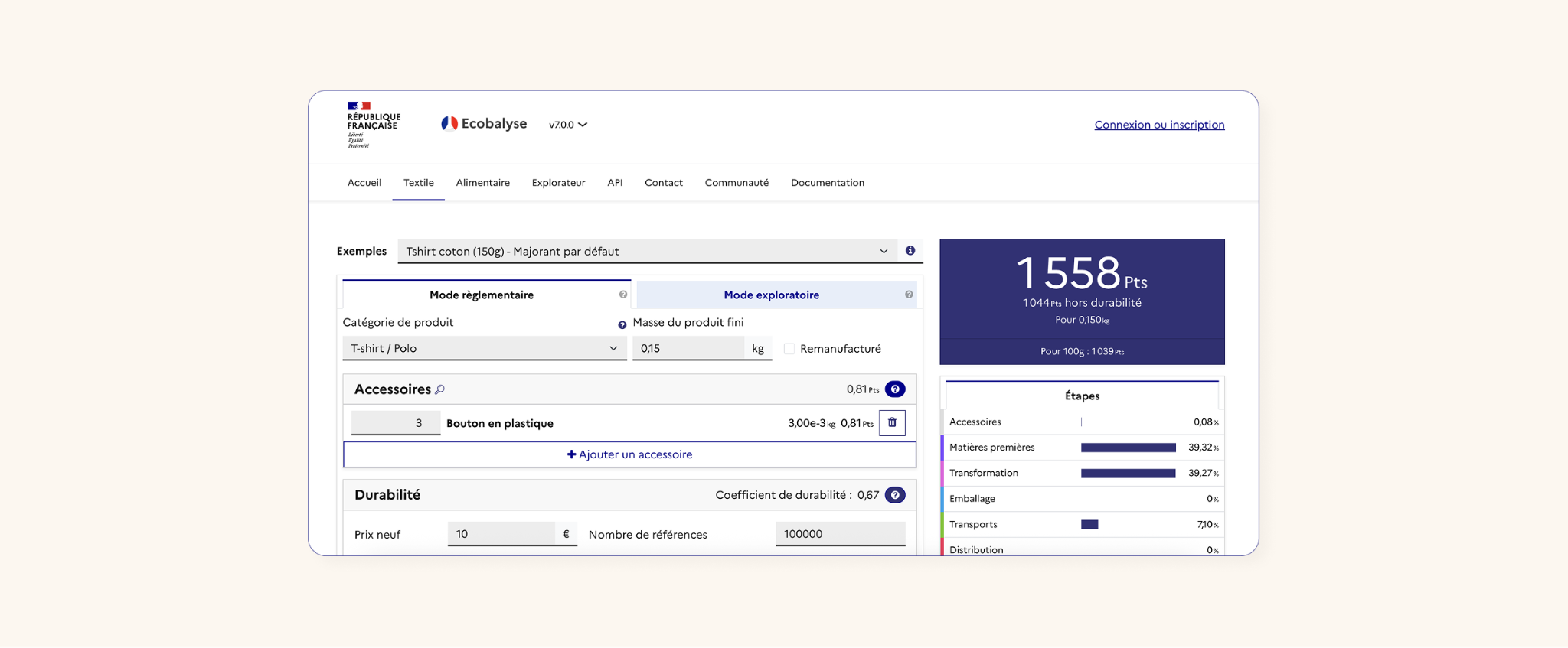
Calculating product footprints is no simple task. It requires data, an understanding of LCA and scientific methodology, and more.
The French Eco-Score is based on an LCA methodology aligned with the EU’s Product Environmental Footprint (PEF) for Apparel & Footwear guidelines, but with many French-specific adaptations.
If creating the scores alone, brands can use France’s Ecobalyse tool to input relevant data, such as:
- Product category
- Composition and weight
- Locations of key production processes
- Sustainability criteria, such as range width, price, and repair services
- Type and amount of printing
- Application of a fading process
- Proportion of air transport
- Accessory components
The result is a single standardized score representing a product’s overall environmental cost, summing and weighting impacts across multiple impact categories.
What are France’s Environmental Cost labeling requirements?
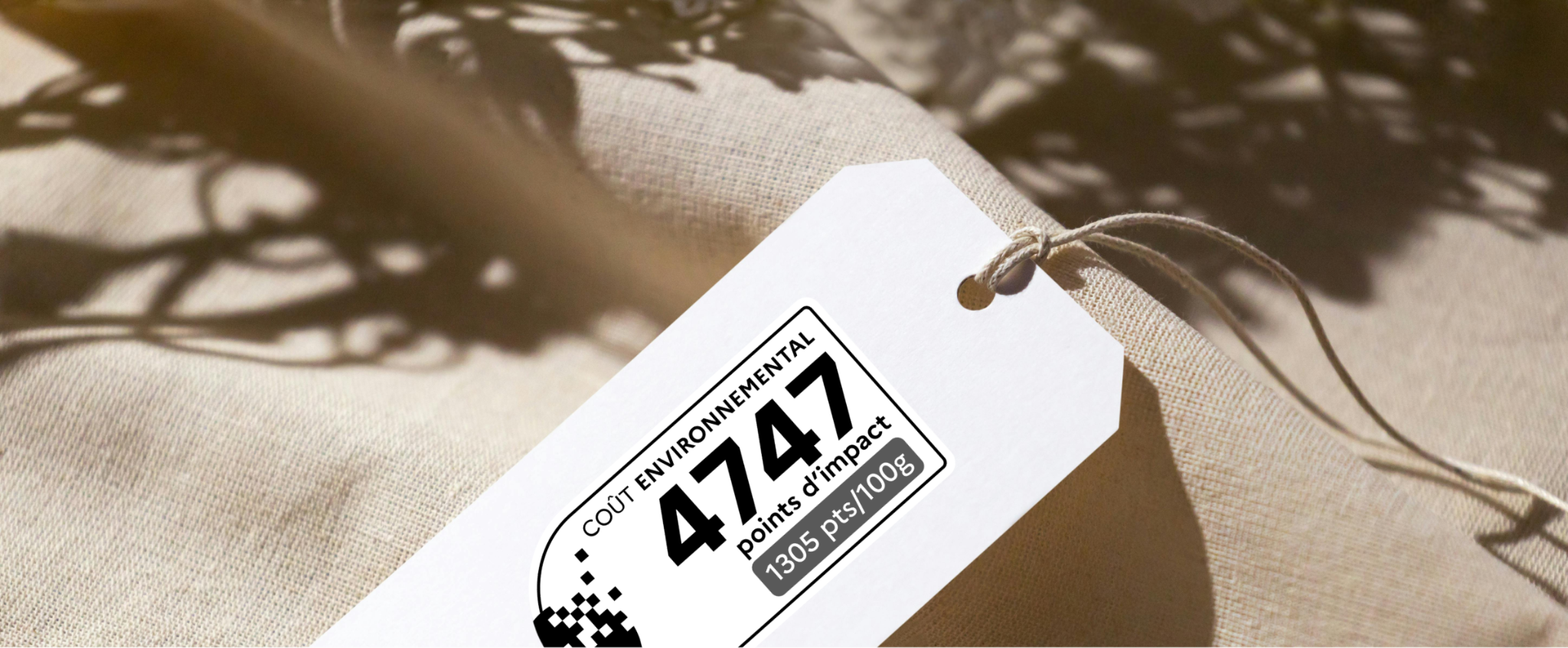
If a company implements the Eco-Score, the scores can be displayed at the point of purchase, in-store, or online. If displayed on a physical shelf or online, the label must be at least as big as the font size of the price numbers for the product.
The format of the label is fixed by the French governments, so brands cannot stylize or redesign it. This is similar to the way in which A-E nutrition labels are standardized.
If other environmental scores are displayed, the Eco-Score must appear alongside them to ensure consistency and avoid misleading communication. This ensures consumers have a uniform reference for understanding a given product’s impact, as well as access to the company’s own version of impact scoring.
How does the Eco-Score relate to wider EU policy?
The methodology underlying the Eco-Score is based on the EU’s Product Environmental Footprint (PEF) framework, but it is not identical.
This means companies selling across multiple EU markets will need to manage both national and EU-level requirements, and plan how their data workflows, reporting systems, and product communication strategies will align.
What should brands be doing now that the Eco-Score is active?
With the Eco-Score already upon us, sustainability and product teams should be taking steps to prepare.
- Audit your data readiness: Assess mandatory and optional parameters and develop a strategy to collect relevant data. Several geographic origins are required (consistent with separate AGEC Decree 2022-748), meaning companies should already be well-positioned on a number of datapoints.
- Review your disclosure strategy: If you’re already sharing environmental impact scores on your products in France, plan to integrate the Eco-Score into your communication strategy to ensure compliance.
- Plan for transparency: Remember: if you don’t declare a score through the dedicated French declaration portal, someone else might. Early action enables you to control the narrative around your own products.
- Use this as a design lever: The Eco-Score isn’t just about reporting; it’s a tool to inform product development and reduce impact upstream. Improving public-facing scores provides another tangible incentive to improve product composition and business practices.
How technology can help you master the Eco-Score
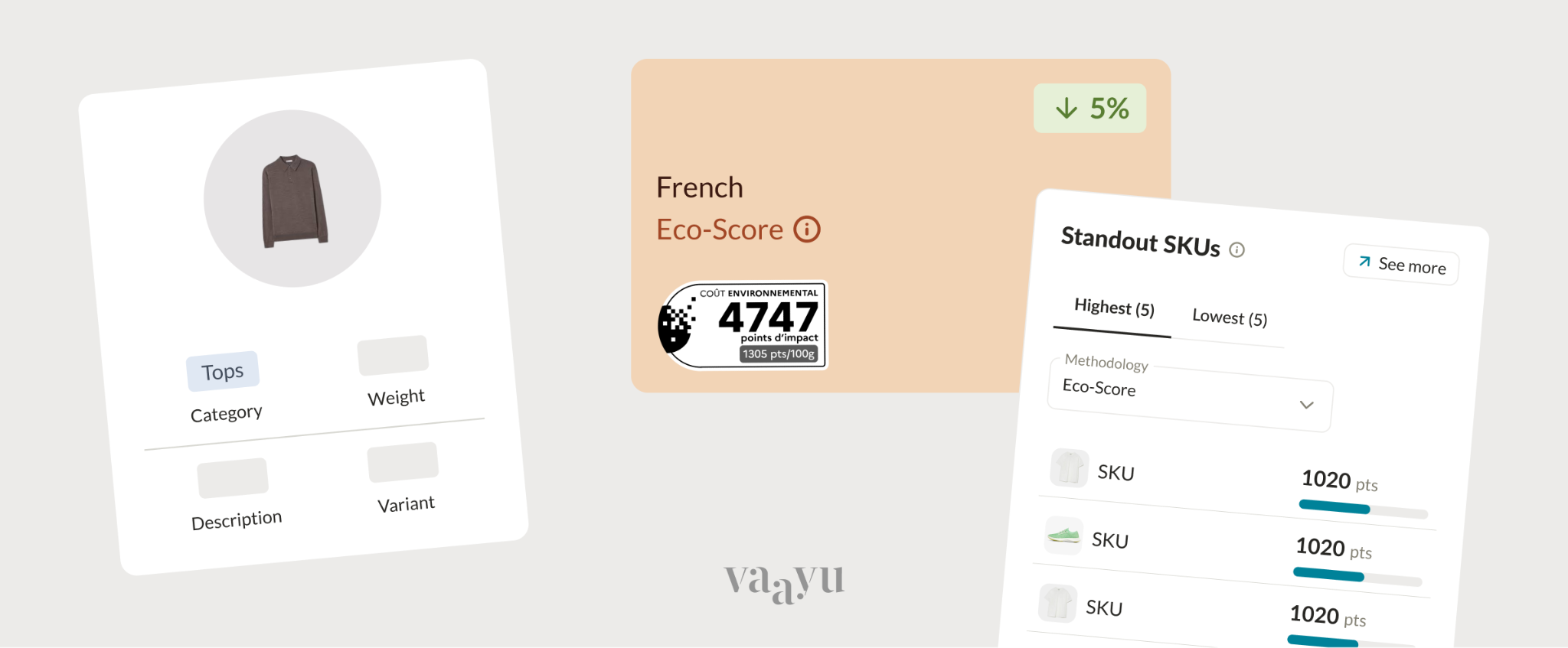
Navigating new regulatory landscapes doesn’t have to be overwhelming.
At Vaayu, we help apparel and retail companies quantify product-level impact data, integrate it seamlessly into internal systems, and prepare for emerging requirements like the Eco-Score with confidence.
Our platform supports:
- Automated data collection to power Eco-Score calculations at scale via the French regulatory 7.0 method
- Bulk product management and modeling to test design changes and impacts on scores
- Consumer-ready data outputs for declaring products and generating Eco-Score labels.
The introduction of the French Eco-Score is a regulatory milestone that also signals a new era of transparency, accountability, and data-driven decision-making in fashion and retail. For brands, the question is no longer if environmental impact will be measured and disclosed, but how well it will be done, and who will control the story that data tells.
As the Eco-Score becomes a defining feature of the European retail landscape, the brands that act early will shape the conversation and strengthen consumer trust in the process. By investing early in accurate measurement, robust data systems, and clear communication, companies can go beyond compliance to build trust, differentiate their products, and unlock new opportunities for innovation and growth.
And as consumer expectations and regulatory demands continue to rise, those that view the Eco-Score as a strategic tool, and not just a legal requirement, will be best positioned to lead the industry toward a lower-impact future.
Get in touch with us to explore how Vaayu, our technology, and team of legislation, retail, fashion, sustainability, and communication experts can help your business stay ahead of the curve. Together, we can help you make the most of the Eco-Score.



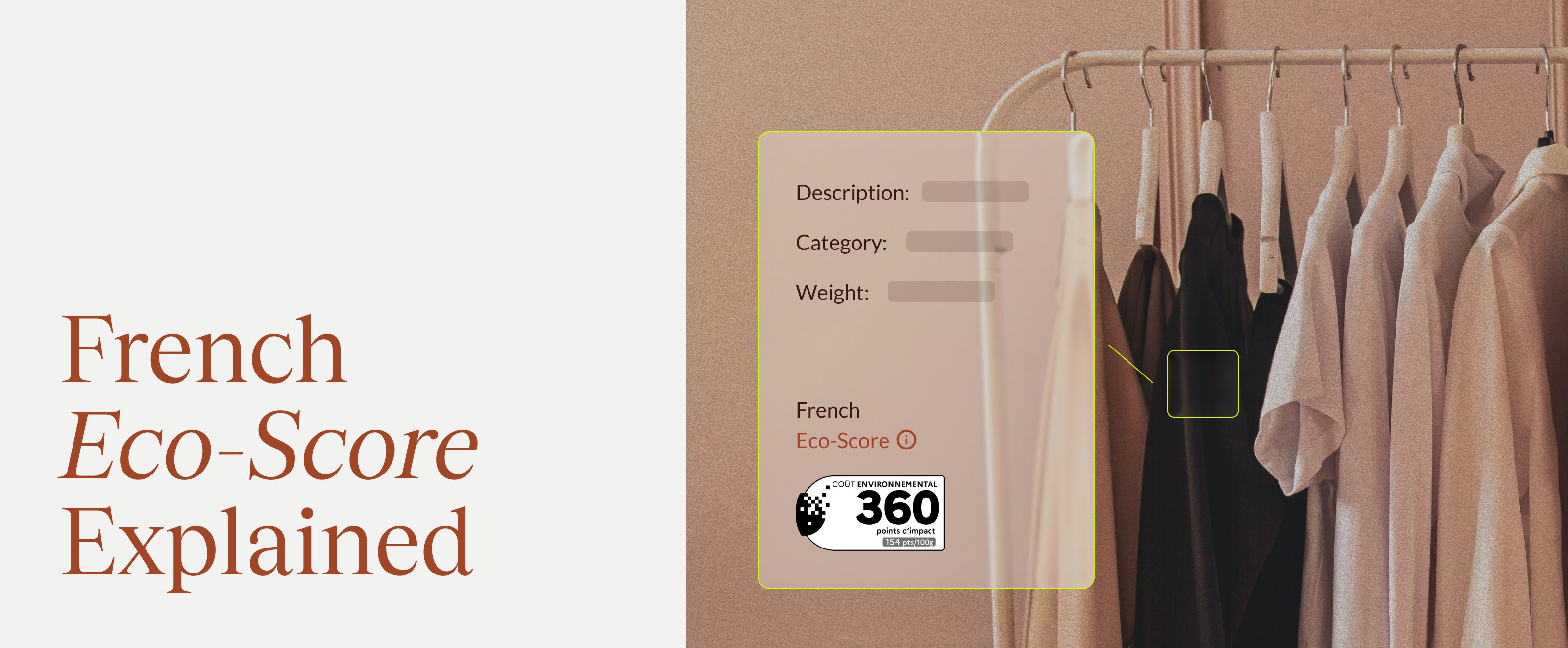


.png)
.png)
.png)
